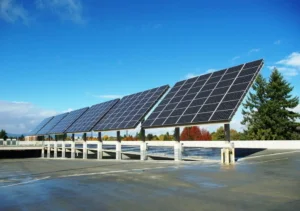Something You Better Know
The solar power exposure varies each day, depending on the season and weather. Generally, around the globe, the daily solar exposure ranges from 1 to 35 MJ m-2. Solar exposure reaches its maximum during summer daytime when the sky is clear, while it reaches its minimum during cloudy days in winter.
Total solar energy arriving at the surface of the Earth consists of two components, namely direct solar energy and diffuse solar energy. Direct solar energy is brought by the Sun’s beam, and it measures the energy falling onto the surface of the Earth. On the other hand, diffuse solar energy measures the amount of energy being taken away from the Sun’s beam as a result of atmosphere attenuating. The diffused energy is finally redirected and scattered toward the Earth’s surface.
How Much Power Could Solar Panel Generate for Melbournian

Best Angle for Solar Panels

For more information, please visit:
Australian Government Bureau of Meteorology
http://www.bom.gov.au/climate/austmaps/solar-radiation-glossary.shtml#radiationquantities
Australian Solar Radiation Data Handbook
http://www.exemplary.com.au/download/ASRDH_cover_contents.pdf
Daily Global Solar Exposure
Optimum Angle For Solar Panels
You Might Also Be Interested In
iBuild Contributes To National Sustainability Initiatives
iBuild Named 2017 Telstra Business Awards Finalist
iBuild’s Environmental Sustainability Achievement Attracts International Media Coverage
Lekofly Homes | Build a 7-Star Sustainable Home to Lockup in 7 Days^
Sustainable House Design for Climate Zone 1
